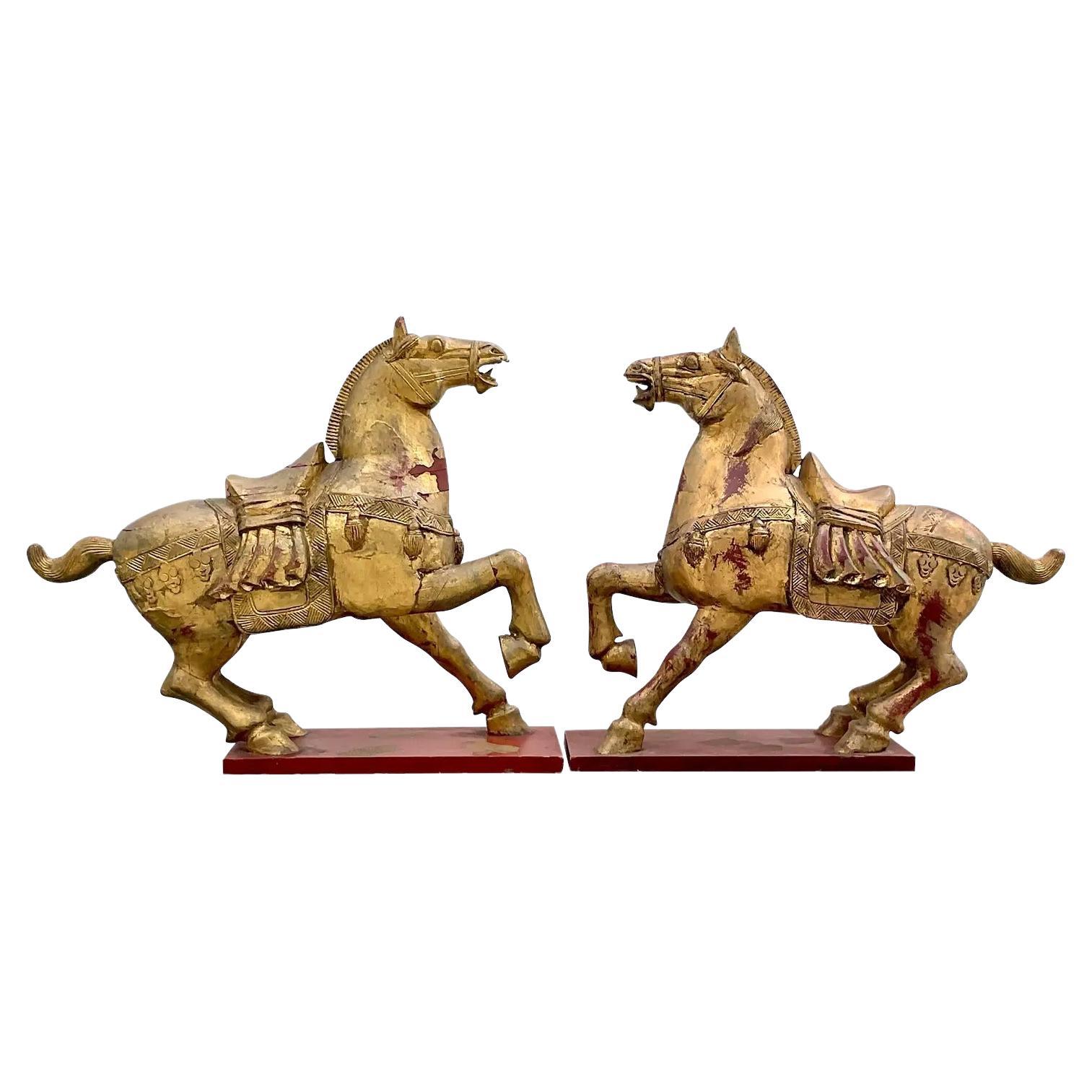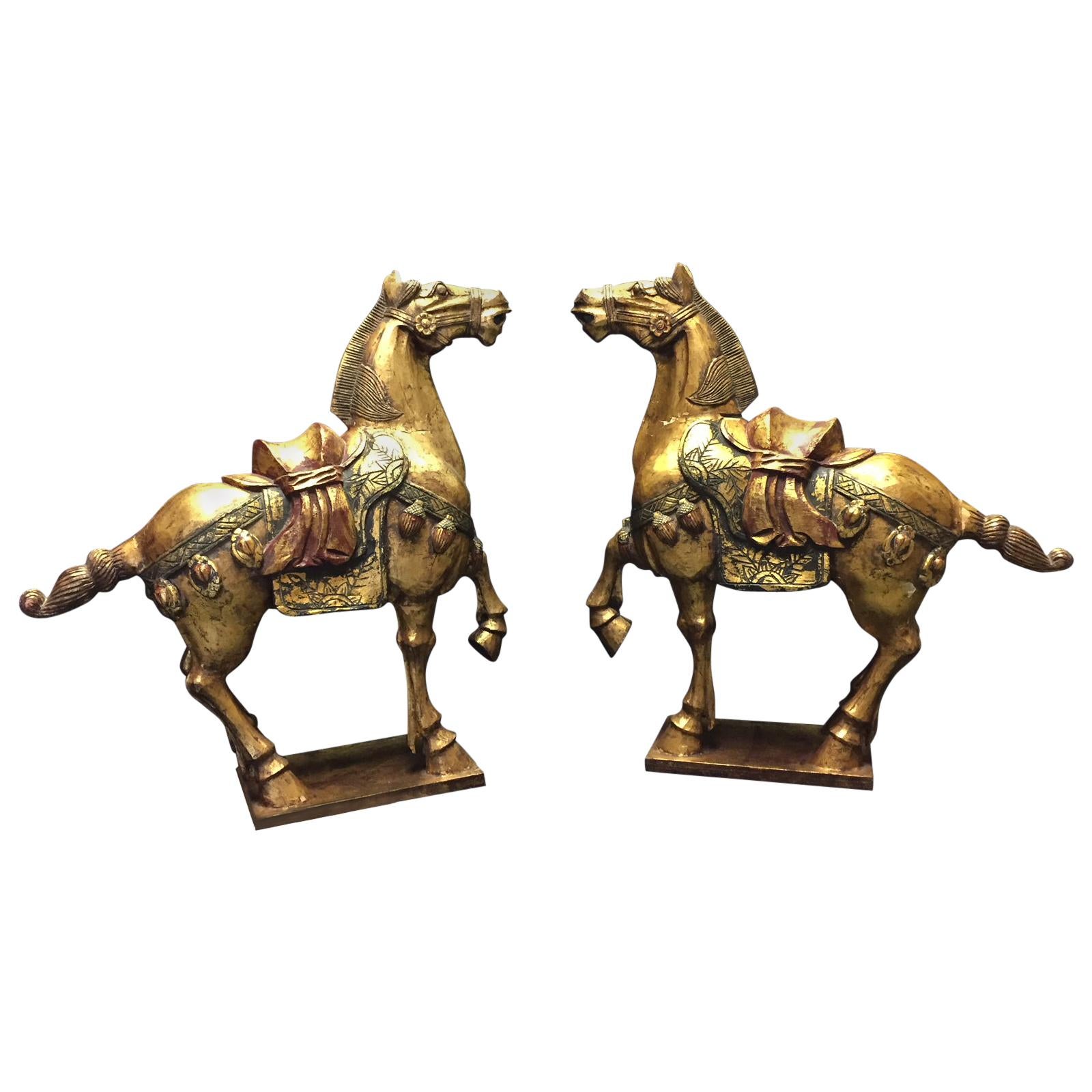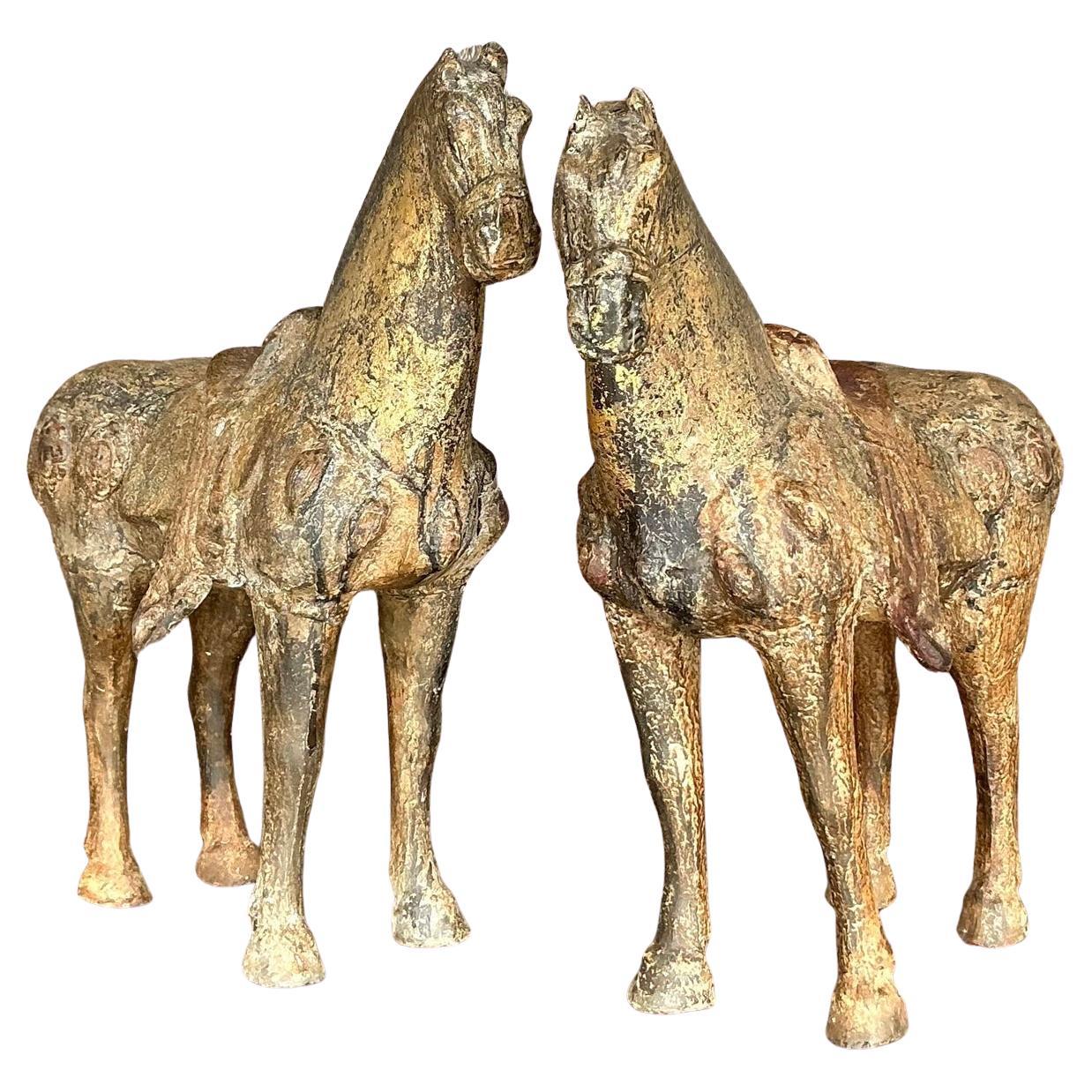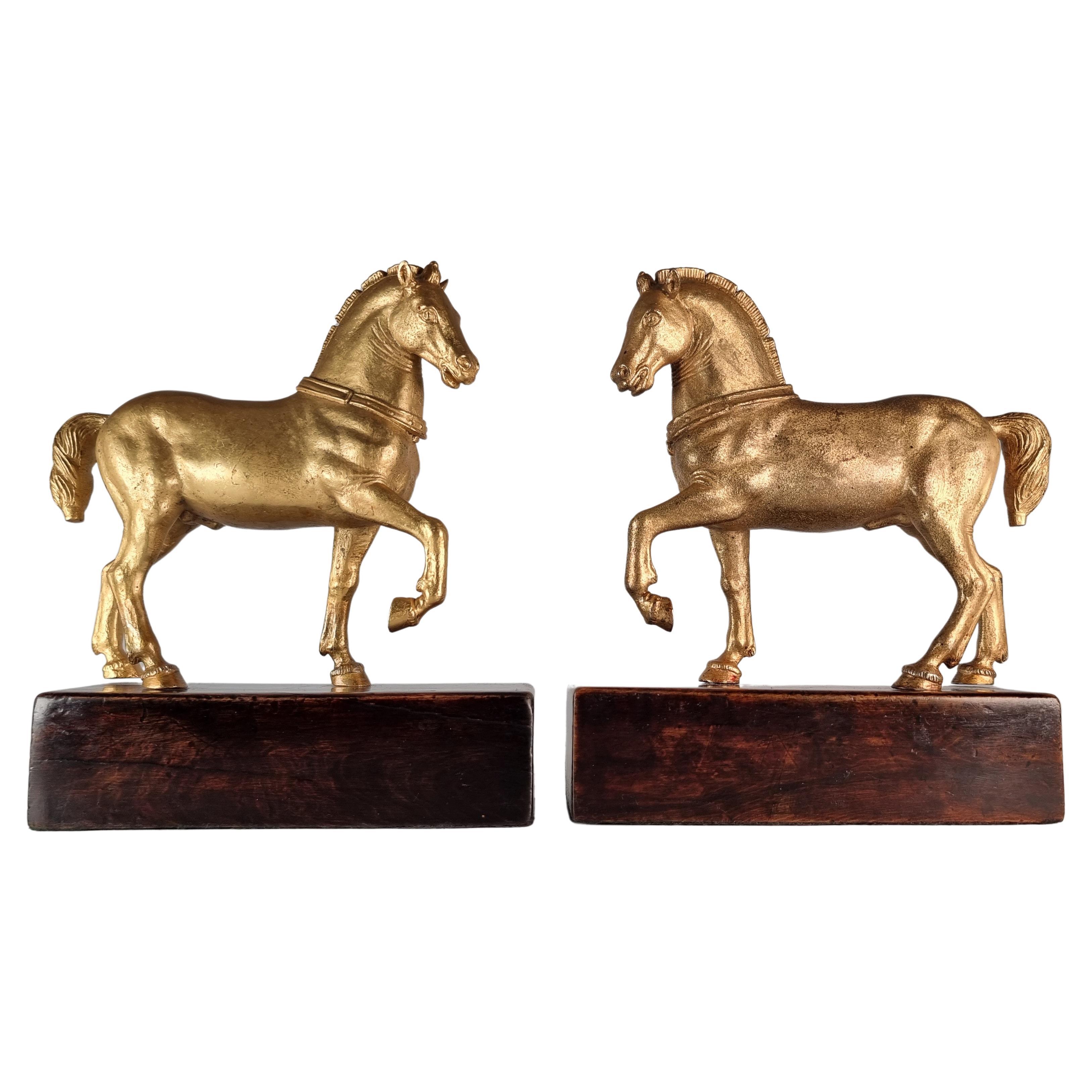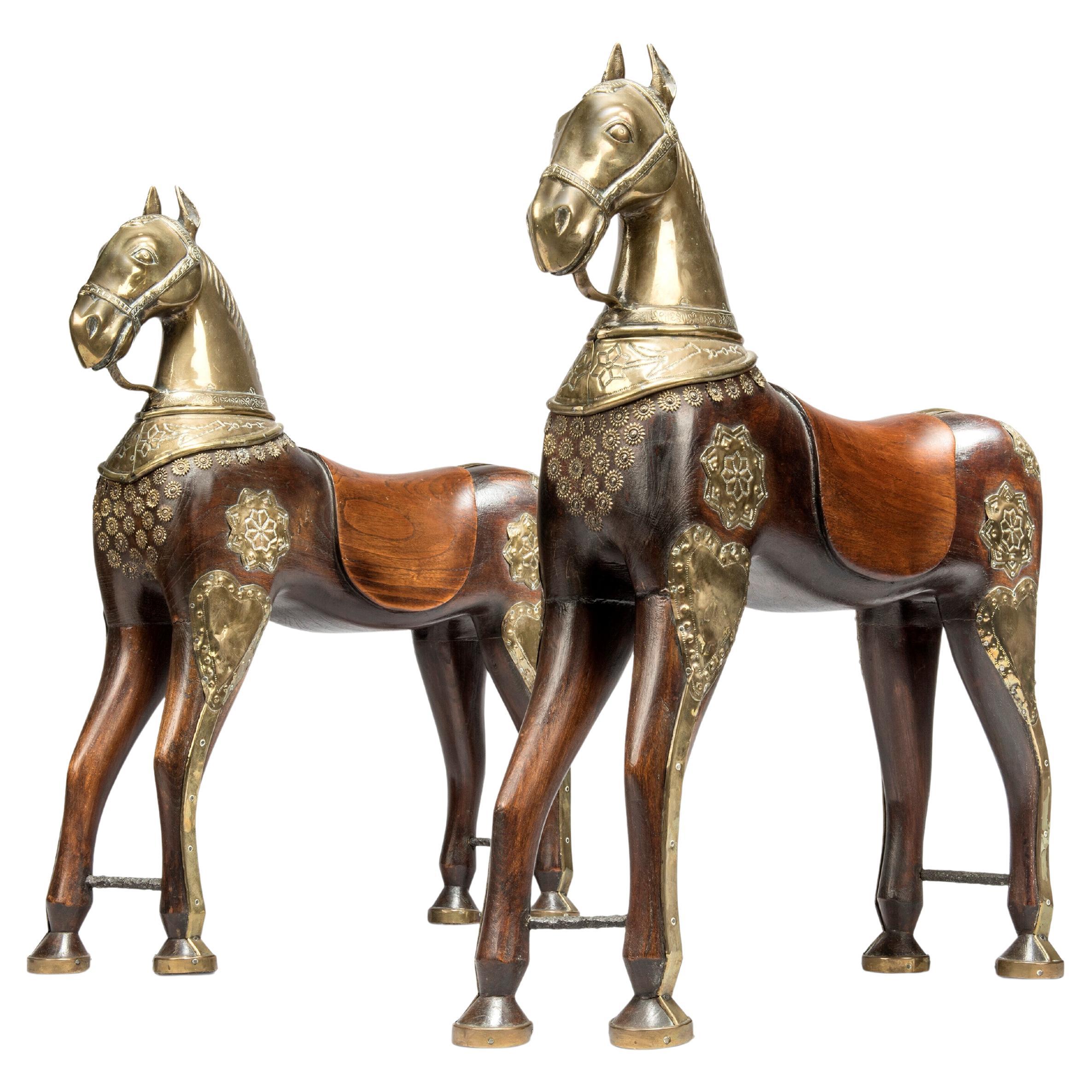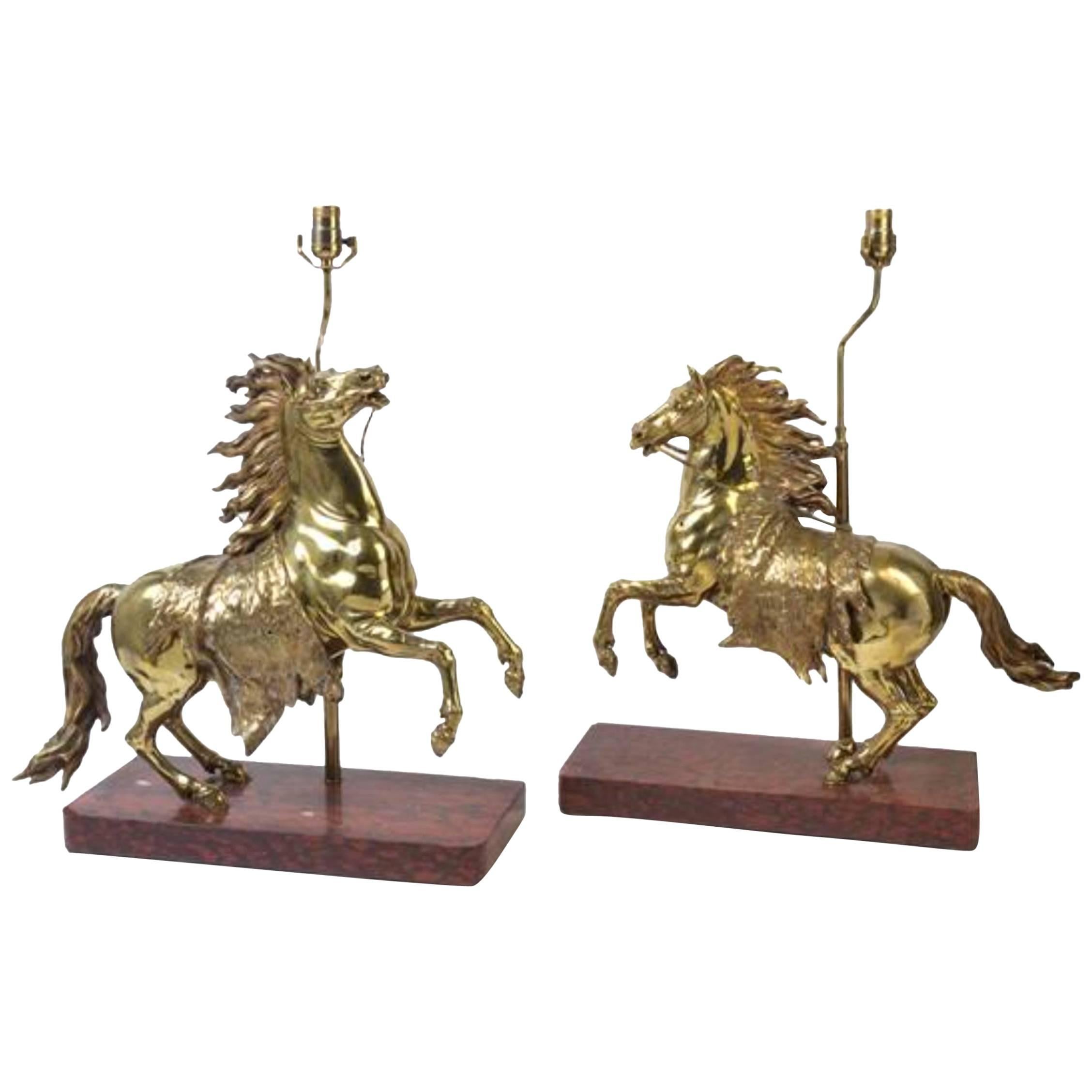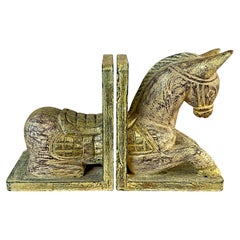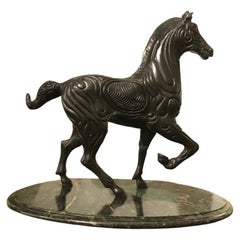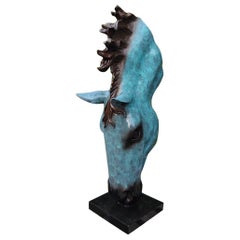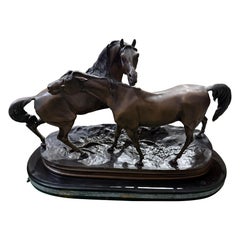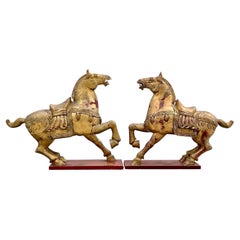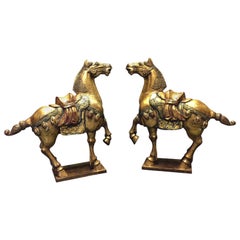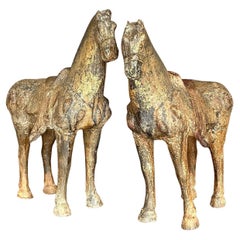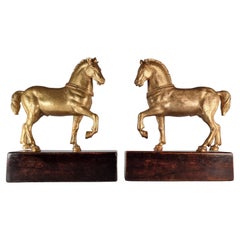Items Similar to Pair of 20th Century Bronze Gilded Gift Horses
Want more images or videos?
Request additional images or videos from the seller
1 of 7
Pair of 20th Century Bronze Gilded Gift Horses
$5,505.66per set
$6,882.08per set20% Off
£4,000per set
£5,000per set20% Off
€4,688.65per set
€5,860.81per set20% Off
CA$7,516.28per set
CA$9,395.35per set20% Off
A$8,361.55per set
A$10,451.94per set20% Off
CHF 4,383.23per set
CHF 5,479.04per set20% Off
MX$102,176.12per set
MX$127,720.14per set20% Off
NOK 55,814.96per set
NOK 69,768.71per set20% Off
SEK 52,542.07per set
SEK 65,677.58per set20% Off
DKK 34,998.96per set
DKK 43,748.70per set20% Off
Shipping
Retrieving quote...The 1stDibs Promise:
Authenticity Guarantee,
Money-Back Guarantee,
24-Hour Cancellation
About the Item
A pair of 20th century bronze gilded gift horses. Lavish pair of cast brass and gold gilt horse statues or sculptures made in the Chinese Tang dynasty style. Features intricately cast bodies with detailed Chinese characters echoed over the both entire figures. Each horse is a mirror image and separate.
- Similar to:Tang Dynasty (Maker)
- Dimensions:Height: 36 in (91.44 cm)Width: 34 in (86.36 cm)Depth: 11 in (27.94 cm)
- Sold As:Set of 2
- Materials and Techniques:Brass,Cast
- Period:
- Date of Manufacture:1900s
- Condition:Wear consistent with age and use.
- Seller Location:Southall, GB
- Reference Number:1stDibs: LU5808225137622
About the Seller
5.0
Vetted Professional Seller
Every seller passes strict standards for authenticity and reliability
Established in 1956
1stDibs seller since 2021
73 sales on 1stDibs
Typical response time: 1 hour
- ShippingRetrieving quote...Shipping from: London, United Kingdom
- Return Policy
Authenticity Guarantee
In the unlikely event there’s an issue with an item’s authenticity, contact us within 1 year for a full refund. DetailsMoney-Back Guarantee
If your item is not as described, is damaged in transit, or does not arrive, contact us within 7 days for a full refund. Details24-Hour Cancellation
You have a 24-hour grace period in which to reconsider your purchase, with no questions asked.Vetted Professional Sellers
Our world-class sellers must adhere to strict standards for service and quality, maintaining the integrity of our listings.Price-Match Guarantee
If you find that a seller listed the same item for a lower price elsewhere, we’ll match it.Trusted Global Delivery
Our best-in-class carrier network provides specialized shipping options worldwide, including custom delivery.More From This Seller
View AllPair of Hand carved Gold wood horse bookends
Located in Southall, GB
Hand-carved wood and gilded gold paint horse bookends are not only functional but also works of art that can add a touch of sophistication and equestrian charm to any bookshelf or di...
Category
Late 20th Century Indian Sculptures and Carvings
Materials
Wood
20th Century Bronze Horse
Located in Southall, GB
A decorative bronze horse with nice detail and patina on a lovely green marble base.
Category
20th Century French Animal Sculptures
Materials
Marble, Bronze
$1,651 Sale Price
20% Off
Bronze with Patina Horse Head Sculpture, 20th century
Located in Southall, GB
This 20th-century bronze horse head sculpture with patina beautifully captures the strength and grace of the animal in a dynamic and lifeli...
Category
20th Century European Animal Sculptures
Materials
Bronze
Large Bronze Sculpture of Two Horses – After Pierre-Jules Mêne
Located in Southall, GB
An elegant and finely modeled bronze sculpture depicting two horses nuzzling in a moment of calm affection, rendered with exquisite anatomical detail and naturalistic posture. This c...
Category
20th Century European Animal Sculptures
Materials
Bronze
Classic French Bronze Horse Sculpture on Marble Base
Located in Southall, GB
A finely cast French bronze sculpture of a standing horse, presented with a naturalistic stance and rich detail in the musculature and mane. This timeless piece rests on a black marb...
Category
20th Century European Animal Sculptures
Materials
Bronze
19th Century Pair of Italian Renaissance Revival Cast Gilt Bronze Ewers
Located in Southall, GB
An impressive pair of Renaissance Revival cast gilt bronze ewers. Italian circa 1900. Each decorated with formal foliate decoration and heavy scroll work. With long ornate handle and...
Category
Antique 19th Century Italian Urns
Materials
Bronze
$1,321 Sale Price / set
20% Off
You May Also Like
Vintage Asian Gilt Carved Wooden Emperor Horses - a Pair
Located in West Palm Beach, FL
A fantastic pair of vintage Asian Emperor horses. Beautiful carved wood with a gilt finish. Gorgeous all over patina from time. Flashes of the red paint ...
Category
Mid-20th Century Chinese Animal Sculptures
Materials
Gold
Pair of Chinese Polychrome Carved Giltwood Horses
Located in Cypress, CA
Opposing pair of Chinese polychrome painted and finely carved giltwood prancing horses.
Category
20th Century Chinese Animal Sculptures
Materials
Giltwood
Vintage Asian Patinated Gilt Wood Temple Horses - a Pair
Located in West Palm Beach, FL
These stunning vintage Asian temple horses bring a touch of mysticism and ancient elegance to any interior. Cast in wood and beautifully patinated with golden and bronze hues, this p...
Category
Mid-20th Century American Animal Sculptures
Materials
Wood, Paint
A rare pair of Grand Tour gilt bronze horses of Saint Mark Venice, circa 1900
Located in Central England, GB
This superb pair of Grand Tour Italian gilt bronzes dates to the late 19th century. They are solid cast and very heavy for their size. They are decorative Grand Tour reproductions ta...
Category
Early 20th Century Italian Grand Tour Animal Sculptures
Materials
Bronze
A pair of brass mounted Teak processional horses
Located in London, GB
A PAIR OF BRASS-MOUNTED TEAK PROCESSIONAL HORSES
LATE 19TH CENTURY, PROBABLY SOUTH INDIA
The elongated bodies beautifully carved with engraved and punch-brass decorated mounts.
In traditional Indian weddings the groom often rides a white horse, also known as a Ghodi. Some believe that riding a mare signifies the groom is ready to take on responsibilities
Provenance
Anonymous collection sale, 'London Living: Wilton Crescent, Belgravia & Avenue Road...
Category
Antique Late 19th Century Indian Sculptures and Carvings
Materials
Wood
Pair of Gilt Bronze Horses Mounted as Lamps
Located in Buchanan, MI
A pair of gilt bronze horses
each in the form of a galloping horse, raised on a faux marble rectangular plinth with rounded corners and mounted as l...
Category
20th Century Table Lamps
Materials
Bronze
$5,800 / set
More Ways To Browse
Gilt Horse
Bronze Dynasty
Cast Bronze Horse
Chinese Bronze Animals
Dynasty Horse
Pair Of Horses Sculpture
Gold Horse Statue
Brass Horses
Horse Mirror
Brass Horse Sculpture
Chinese Bronze Mirror
Chinese Bronze Horse
Vintage Brass Horse Statue
Seguso Murano Glass Sculpture
Bronze Bird Sculptures
Large Porcelain Animals
Sheep Sculpture
Vintage Birds On A Branch
